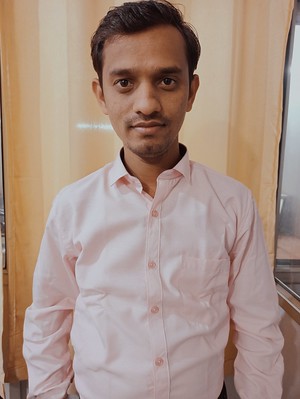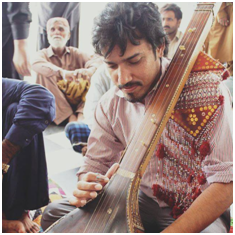Mayur Kudupale
Bangladesh is celebrating 50 years of independence from Pakistan. It has been a remarkable journey for this country that has set an ideal example in the Indian subcontinent. The independence of Bangladesh and post-independence development is directly associated with the India-Pakistan tussles. Soon after independence, Henry Kissinger had famously called Bangladesh a ‘Basket Case’ but the efforts of Bangladesh surprised everyone. The rise of the Basket Case can be analysed through its potential to help other countries like Sri Lanka in times of crisis. Flourishing in every aspect of the Human Development Index, it has given a serious slap to the Ashraf-led Pakistani establishment which has continuously denounced separation of Bangladesh with scepticism. Recently, a former World Bank advisor also stated that “Pakistan may seek aid from Bangladesh in 2030”. Interestingly, the leadership of Bangladesh is looking to complete its dream of becoming a ‘Asian tiger’ like Hong Kong, Singapore. We have to congratulate them on their development and wish them on completion of 50 years of independence. While watching and reading dozens of articles and videos on the liberation war of Bangladesh, my eyes and mind were looking at the people who suffered the entire brunt of geo-caste and religious politics: the lower castes. BBC Hindi has made a serial on the 1971 war and the Indian forces’ contribution to Bangladeshi liberation. Along with this, The Indian Express also covered the development story of Bangladesh at a very micro-level. All this coverage has told us loudly about the tectonic shifts brought in by contextual and effective policymaking.
Tragedy of 1947
From childhood, we had grown up listening to the story of Dr Ambedkar’s victory in the election from East Bengal (today Bangladesh). It was always a source of inspiration, along with sadness around contemporary problems of the Namoshudras, the Rajbanshi, the fishing community, Chakma Buddhists and other tribal groups. Till the last day, efforts were made by the Scheduled Castes’ Federation and other lower castes’ associations to stop partition. A massive protest was also carried out against the partition but it was not sufficient to change the fortunes. As a result, partition of Bengal forced three tragedies on the lower castes in the Bengal province. One, Dr Ambedkar had lost membership of parliament since East Bengal went to East Pakistan. Two, the partition violence effected serious changes in the social demography. Three, the lower castes were forced to migrate which loosened the grip of the anti-caste movement in the united Bengal province. For securing the interest of the lower castes and following the advice of Dr Ambedkar, Jogendranath Mandal decided to stay in East Bengal and join the Pakistan cabinet. Very soon, he had to face disappointment. The community which was fighting for socio-political, educational rights suddenly got displaced and had to engage with saving lives from communal violence. The question of caste was suddenly replaced by the question of life and camp-based survival. A somehow similar argument has been made by Dwaiyapan Sen too, but the activist circle argued in a different mode. In a nutshell, displacement created a double burden. One was fighting against caste structure and another was fighting for getting citizenship in India. Jogendranath Mandal spent the rest of his life fighting for resettlement of lower caste refugees. As usual, migration of upper castes didn’t create much suffering compared to the lives of lower castes who were still trapped in Assam’s NRC and and are still struggling for proper citizenship rights.
Second Tragedy of 1971
Tragedy knocks on the door of the oppressed in the form of the oppressor, in some or the other way, consistently. In Bangladesh, after Sheikh Mujibur Rahman’s victory in the elections he was denied his right to be the Prime Minister by the West Pakistan establishment. This created a huge debate on linguistic and regional imperialism. In East Pakistan, the West Pakistan military treated the lower castes as subhuman and carried out atrocities on them. In the clash of two political rivals, history was getting repeated with the lower castes. Bengali Muslims had paid a price but the lower castes had paid double that price. In the 1971 liberation war, Pakistan started the ‘Operation Searchlight’ during which they killed and tortured thousands of people and raped women. It is true that Bengali Muslims faced a major backlash from the Pakistan’s Army, but the fact that the lower caste Non-Muslims were targeted more and killed in the name of being Indian agents and ‘Hindus’ cannot be sidelined. The Pakistani military operation forced them to migrate to India. In India, their settlement camps were located in very interior and forest areas. The Indian government distributed them in different parts of India like, Maharashtra (Chandrapur and Gadchiroli), Odisha, Madhya Pradesh and Chhattisgarh, etc. The common element was that all those settlements were located in forest areas. Again, they became stateless citizens in conflict with the forest departments of India.
Outcome of 1947 and 1971: Lost ground of Anti-Brahmanism
During the first half of the twentieth century, Bengal was the epicentre of the radical anti-caste movement. Bengal was pivotal in creating leadership and literary development that motivated activists across India. Leaders like Guruchand and Harichand Thakur, Jogendranath Mandal were crucial in this progress. The progress can be judged by the developments of educational institutions run by the lower castes and these became a hub for women’s education and their empowerment. They also paved the way for the recreation of identities like Chandal and Namoshudra. This movement was strongly against partition and believed the interests of people was in non-partition. After the partition, a large number of lower castes migrated into West Bengal. Their settlement in the Sundarbans was a matter of concern to the Indian government. While recalling the genocide of Namoshudras in the 1971 war, Dr JP Mondal writes “Condition of Namoshudra after the birth of Bangladesh has been worst. A few lakhs of them have been already butchered to death by Pakistani soldiers and Rajakars. Every Namoshudra family of East Pakistan has lost one or two innocent souls during the periods of turmoil. Between 25th March and 16th December of 1971. My pen shrinks from recording the statistics of death and orgy of bloodshed when lakhs of them on small country made boats were stranded in the riverine current of ‘Sipsa’, a river adjoining Indian border, have been indiscriminately shot at for days together from dozens of military gunboats. The river current sprinkles red water. The dead bodies are found floating in the up and down stream. The children have been butchered to death before the eyes of their parents. Young girls have been thrown into the water, criminal assaults are being committed over their bodies. Nazi terror is a poor show in comparison to these infernal atrocities”. (See, Oppressed Indian, July 1982). In India, the Marichijahpi massacre had taken place, thousands of Namoshudras were killed by the Jyoti Basu led communist government. After liberation of Bangladesh, a new constitution for the people of Bangladesh was adopted. People appreciated Bangladesh for adding a secular framework in the constitution but the disappointment was ignoring the lower caste situation and not adding any affirmative action policy towards their social inclusion and empowerment.
Today Bangladesh is achieving all heights of economic prosperity but those displaced by the bloody power struggle are still paying the price. Citizenship has become an essential issue for east Bengali lower castes. Today, BJP is using the citizenship narrative to gain power in Bengal. What is the crime of the Namoshudras? Usually, it is said they are the paying price for sending Dr Ambedkar to the Constituent Assembly. This act of bravery became a graveyard for them. I hope, Bangladesh government will do some work for them.
Acknowledgement: I want to thank Subodh Minto for sharing the old July 1982 issue of Oppressed India, edited by Kanshiram Saheb.
~
Mayur Kudupale is pursuing M.Phil in Sociology, Delhi School of Economics, Delhi University.
.










Perfect and critical analysis